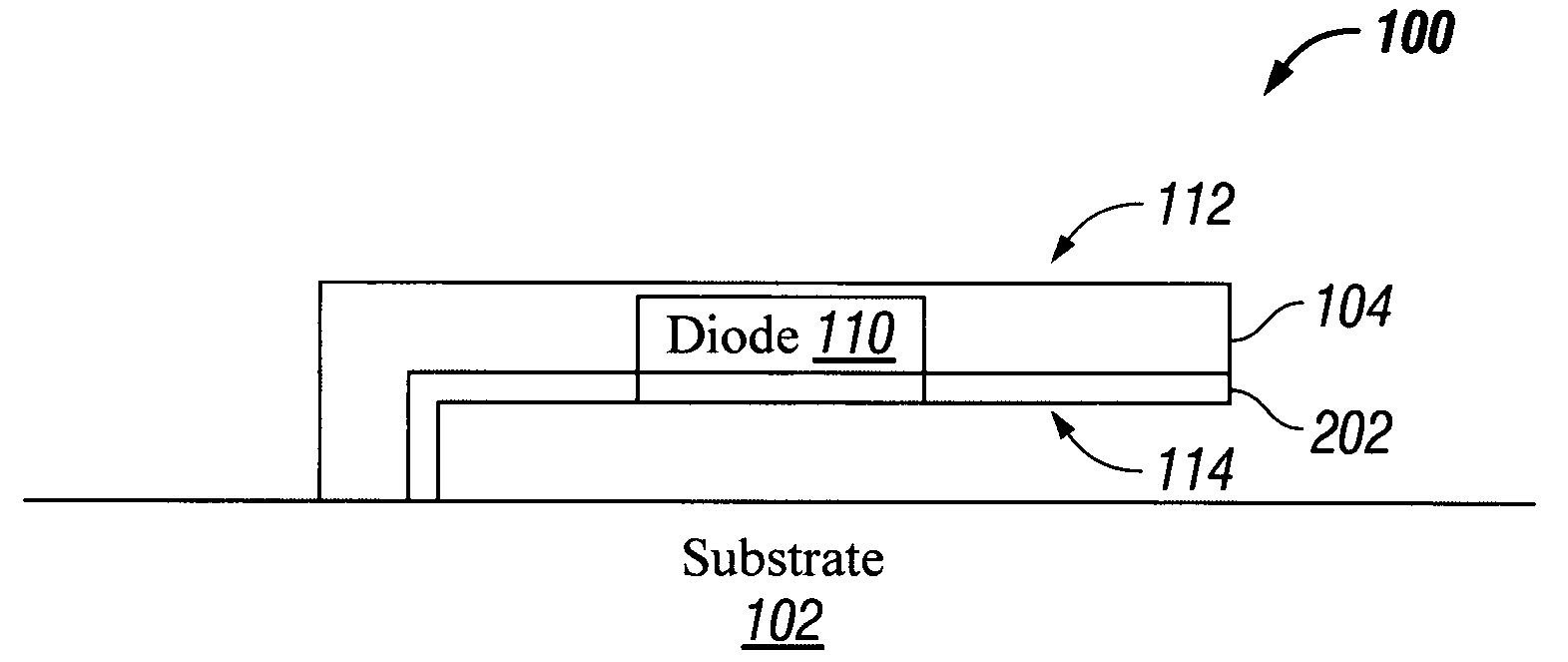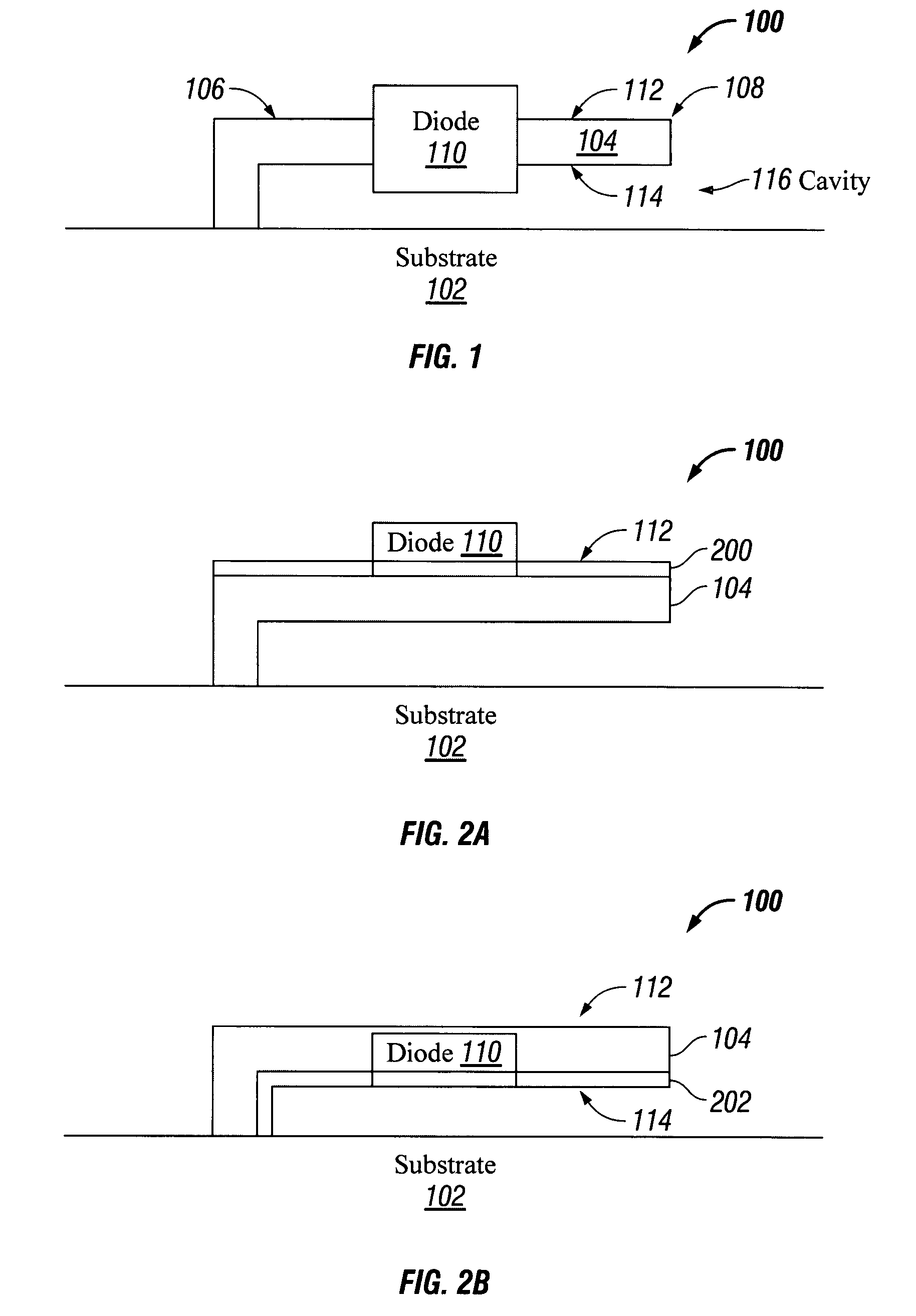Piezo-diode cantilever MEMS
a diode and diode technology, applied in the direction of microstructural devices, acceleration measurement using interia forces, instruments, etc., can solve the problems of changing electrical current and strain across a large surface area to create current changes, and achieve enhanced mechanical strain, enhanced chemical vapor deposition, and reduced mems
- Summary
- Abstract
- Description
- Claims
- Application Information
AI Technical Summary
Benefits of technology
Problems solved by technology
Method used
Image
Examples
Embodiment Construction
[0025]FIG. 1 is a partial cross-sectional view of a piezo thin-film diode (piezo-diode) cantilever microelectromechanical system (MEMS). The piezo-diode cantilever 100 comprises a substrate 102. Some possible substrate materials include glass, polymer, quartz, metal foil, Si, Si-containing materials, sapphire, ceramic, and compound semiconductor materials, such as Si-germanium for example. A multi-layered film cantilever beam 104 has a distal end 106 anchored to the substrate 102, and a proximal end 108. A diode 110 is embedded in the cantilever beam 104 and shares a film layer in common with the cantilever beam 104. The cantilever beam 104 has a top surface 112 and a bottom surface 114. A cavity 116 is formed between the cantilever beam proximal end 108 and the substrate 102.
[0026]The cantilever body can be a rectangular as shown, or shaped (e.g., as a triangle, circle, or oval), with one or multiple points for anchoring to the substrate. The cantilever beam 104 and diode 110 film ...
PUM
| Property | Measurement | Unit |
|---|---|---|
| temperature | aaaaa | aaaaa |
| thickness | aaaaa | aaaaa |
| grain size | aaaaa | aaaaa |
Abstract
Description
Claims
Application Information
 Login to View More
Login to View More - R&D
- Intellectual Property
- Life Sciences
- Materials
- Tech Scout
- Unparalleled Data Quality
- Higher Quality Content
- 60% Fewer Hallucinations
Browse by: Latest US Patents, China's latest patents, Technical Efficacy Thesaurus, Application Domain, Technology Topic, Popular Technical Reports.
© 2025 PatSnap. All rights reserved.Legal|Privacy policy|Modern Slavery Act Transparency Statement|Sitemap|About US| Contact US: help@patsnap.com



